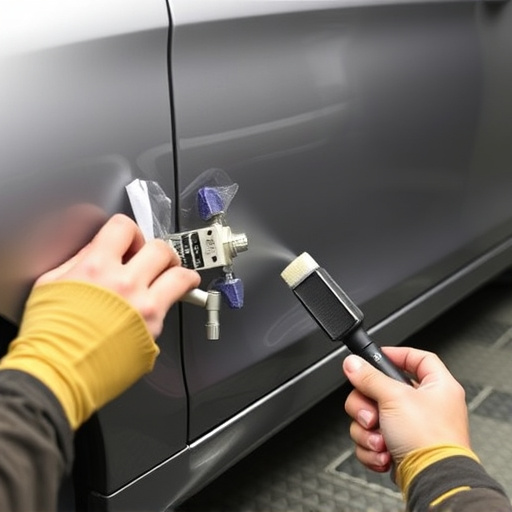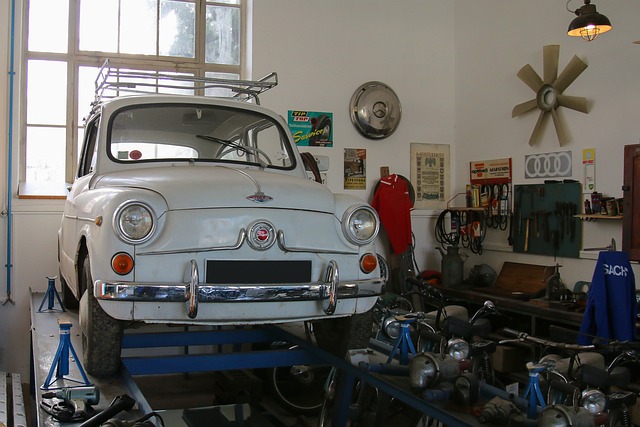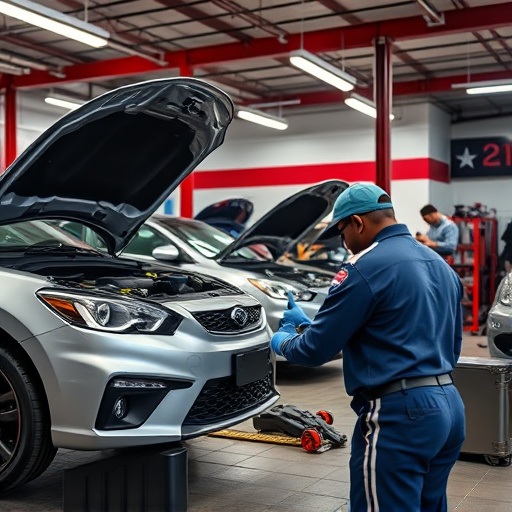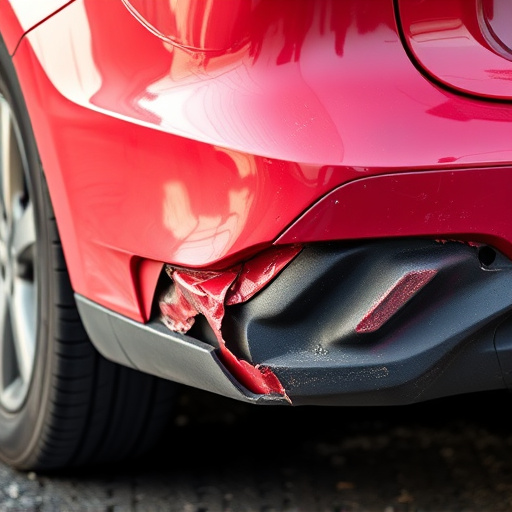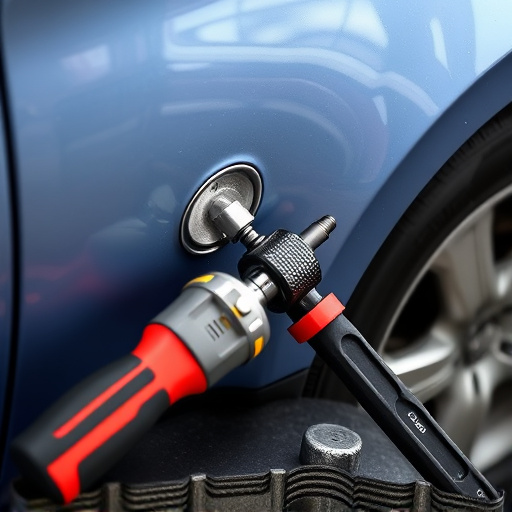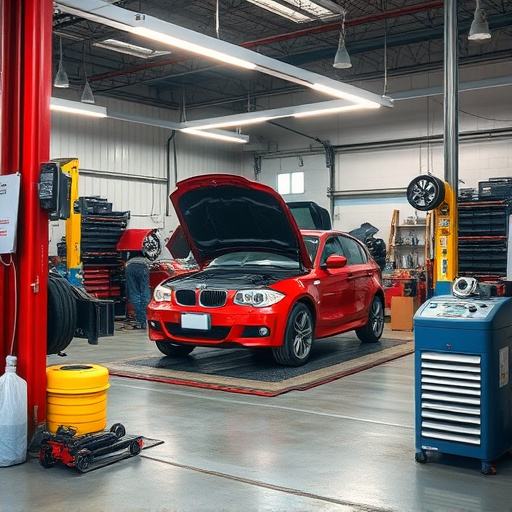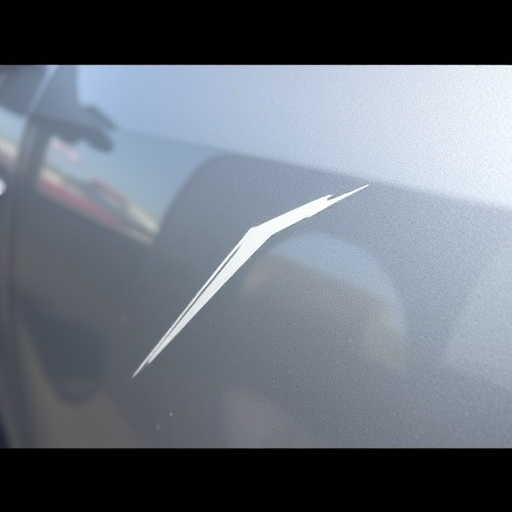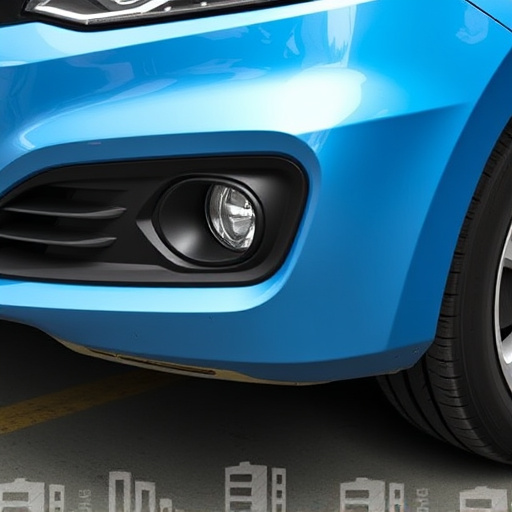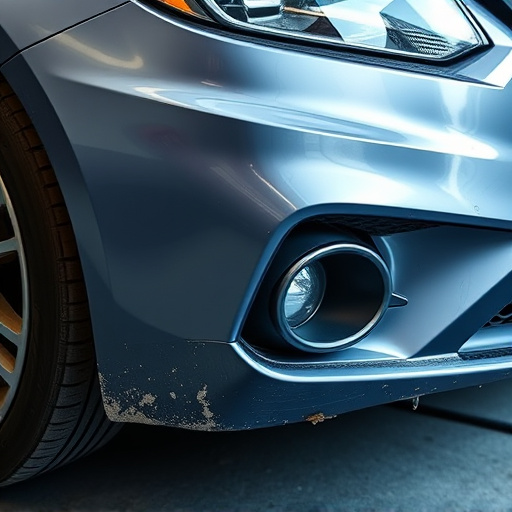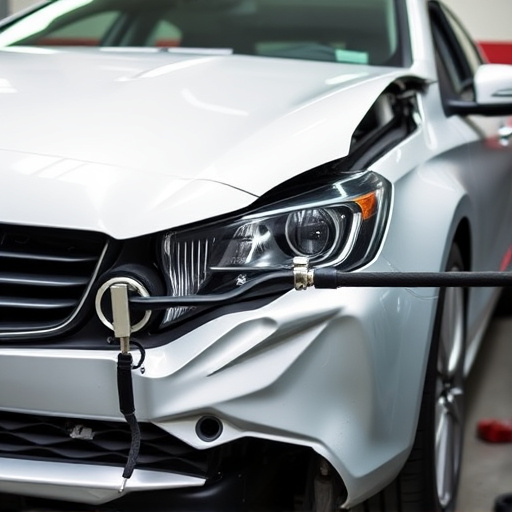Post-collision AC system inspections are crucial for identifying both visible and hidden damage, including compressor/condenser unit integrity and refrigerant levels. Specialized tools and detailed assessments by trained technicians are vital to resolve issues, enhance performance, ensure passenger comfort, and prevent environmental impact, particularly in fleet repair services.
After a collision, a thorough inspection of your vehicle’s AC system is crucial for safe and effective repair. This checklist guides you through the essential steps post-crash evaluation. From assessing exterior damage and crashes to verifying refrigerant levels and leaks, each component deserves meticulous attention. Ensure proper functioning and optimal cooling performance by following these stringent checks specific to AC system collision repair.
- Assess Exterior Damage and Crashes
- Inspect Compressor and Condenser Unit
- Verify Refrigerant Levels and Leaks
Assess Exterior Damage and Crashes
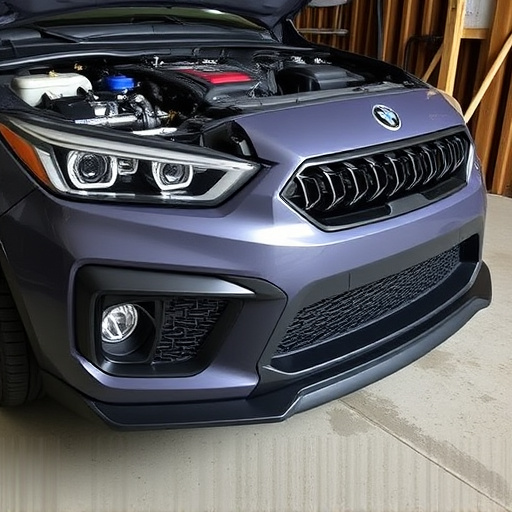
When conducting a full inspection checklist for post-collision AC systems, assessing exterior damage and crashes is the first critical step. This involves meticulously examining the vehicle’s external components for any signs of impact, including dents, scratches, and broken parts. Such visual cues can provide valuable insights into the extent of the collision and potential effects on internal systems like the AC unit. Remember that even seemingly minor crashes can cause significant damage to intricate systems; thus, a thorough evaluation is essential.
For instance, in a Mercedes-Benz collision repair scenario, technicians must consider not only the visible damages but also hidden components that might have been affected during the crash. This could include leaks or dislodged parts within the AC system, which require specialized tools and expertise to detect. Reputable car repair services offer comprehensive assessments, ensuring that any issues with the AC system are identified and addressed before proceeding with repairs, thereby guaranteeing optimal performance and customer satisfaction.
Inspect Compressor and Condenser Unit

When conducting a full inspection checklist for post-collision AC systems as part of collision repair services, one of the critical components to assess is the compressor and condenser unit. After a car undergoes bodywork due to hail damage or other impacts, it’s essential to verify the integrity and functionality of these parts. The compressor plays a vital role in circulating refrigerants, while the condenser facilitates heat exchange, ensuring your AC system operates efficiently.
Inspecting these components involves checking for any visible signs of damage, including dents, cracks, or leaks. Ensure all connections are secure, and there’s no loose debris. In some cases, especially with severe collisions, the compressor or condenser may require replacement to prevent further issues and maintain optimal auto repair services. Remember that a well-functioning AC system not only enhances passenger comfort but also contributes to overall vehicle performance and longevity.
Verify Refrigerant Levels and Leaks
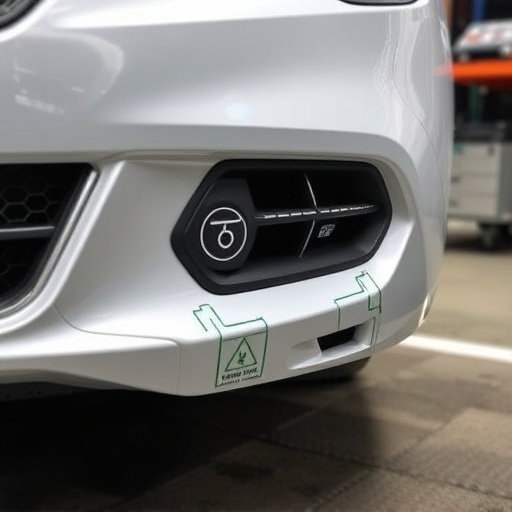
After a collision, one of the critical components to assess in an AC system is the refrigerant level and any potential leaks. This step is crucial in the AC system collision repair process as it ensures the environmental safety and optimal performance of the cooling mechanism once repairs are made. Technicians should use specialized tools to verify the levels and check for any signs of a leak that could indicate damage to the refrigerant lines or seals, common issues following accidents.
A thorough inspection involves comparing the current refrigerant levels with the manufacturer’s specifications and identifying any discrepancies. If leaks are suspected, further investigation is required to pinpoint the source—a process that often involves visual inspections, pressure tests, and advanced diagnostic tools. Addressing refrigerant-related issues promptly and accurately is key, especially in fleet repair services, as it prevents further environmental damage and ensures customer satisfaction by delivering a well-functioning AC system free from unwanted odors or performance hiccups, even after repairs for auto glass or scratch repairs.
When conducting a post-collision AC system inspection, a thorough check is vital for ensuring optimal performance after any automotive accident. By covering exterior damage assessment, internal component inspection, and refrigerant management, this checklist equips collision repair professionals with the tools to effectively diagnose and rectify issues related to AC systems. Adhering to these guidelines facilitates efficient collision repair processes, enhances customer satisfaction, and guarantees that vehicles return to the road with reliable climate control capabilities. For collision repair experts, mastering AC system collision repair is key to delivering top-notch service.
